The Art of Getting Dressed: Cultivating Patience
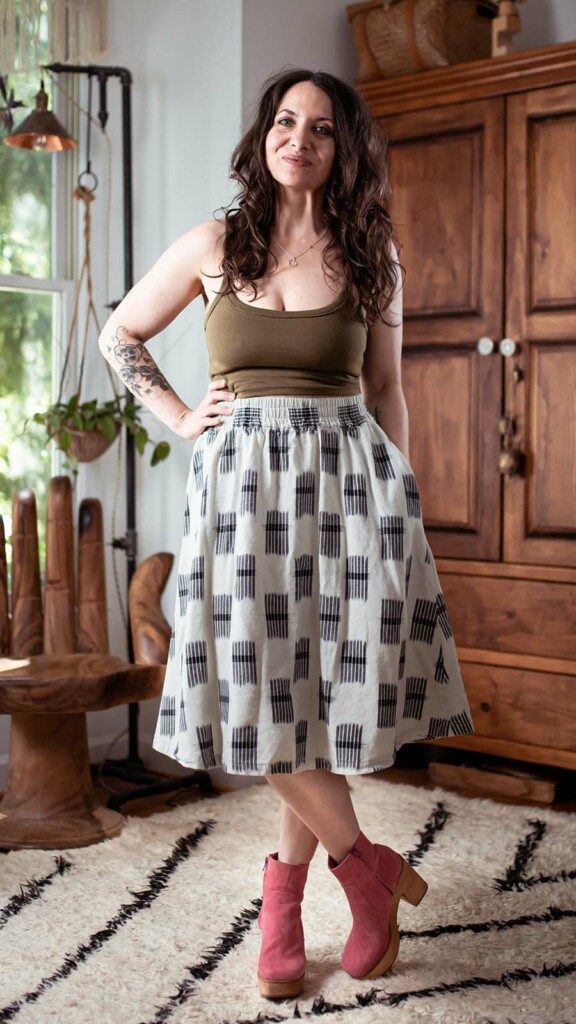

Just like a writer who cannot produce her best work on a tight deadline – your wardrobe will feel forced and laden with stress if not enough time is given to daydream, to jot down thoughts, to connect and combine ideas in new and exciting ways.
Good writers and those with good style also share another time-needy skill: a well-honed editorial eye.
For me, the process of writing a coherent piece is, at once, beautiful and torturous.
The first draft is often lackluster. It takes time – hours, days, even weeks – of turning ideas over in my head, of crossing out at rearranging, to take my rough, rocky initial thoughts and transform them into the shiny, smooth words that (hopefully) hold some worth for my eventual readers.
Outfit details: Gypsum Skirt in View B, Sommar Camisole, Charlotte Stone boots.
Good style also takes time
The most effective way to both simplify and enjoy the process of curating a wardrobe you love is to cultivate the foundational skill of patience.
Slowing down your pace (whether sewing, thrifting, or even cleaning out your closet) will help you hone your curatorial eye, and will decrease your stress in the process.
Give yourself enough time to build your closet, while making the effort to tune into what you feel best wearing, and your wardrobe will become a very compelling style story indeed.
There are also benefits to having patience when it comes to cleaning out your closet and donating what you *think* you no longer need, but you may just be getting rid of things too quickly.
Hold your horses on the closet cleanout
I can’t tell you how thankful I have been to my past self for choosing to box up what I wasn’t currently feeling like wearing and keeping it around so that my present self can enjoy opening up treasures a few years down the line.
In both outfits I’m wearing in this post, I’ve chosen pieces that I made quite a long time back – 5 or 6 years ago – having “rediscovered” them after having packed them away for years.
This goes against a lot of what you see on the internet these days. In the name of minimalism, we are often encouraged to donate a huge portion of our closet contents on the regular. This practice, however, has far-reaching consequences, and I have come to believe that donating clothing should be a last resort.
Sure, if the pants are many sizes too small, it’s a good idea to say goodbye (ideally re-selling or using the item as part of a refashion.) But that blouse in the silky fabric with the ruffles you don’t see around much “on the internet” right now? Keep it. And you don’t even need to box it up: better yet, keep wearing it despite the fact that you don’t see others wearing something similar.
Outfit details: Stasia Dress, platform Converse.
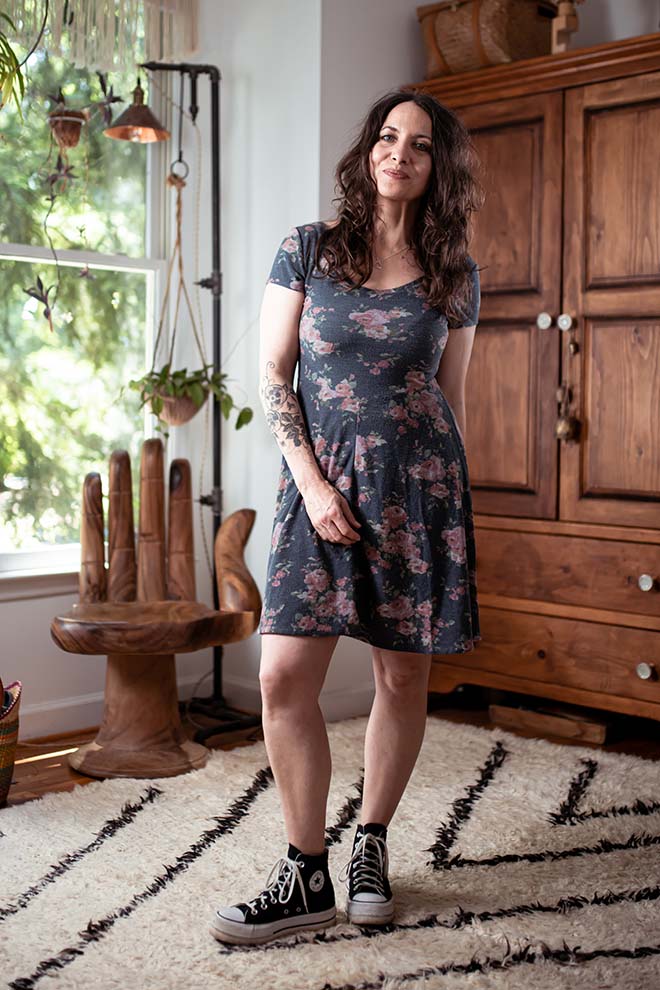
“Anything goes” is largely true of distinctive personal style, especially in more sustainable circles where thrifting is the status quo. Stand by your “out of fashion” pieces and wear them proudly. The ability to do this with confidence is what distinguishes your wardrobe from a disparate collection of pieces ”fashion” marketed to you. Wearing what you love is the essence of style, and will help you (slowly) build a curated, hands-on museum of wearable textiles that speak your style language.
Great style = patience + confidence
Style is the confluence of patience and confidence – both of which are attainable by anyone, not just those with deep pocketbooks or a wealth of time to make everything their heart desires.
Some ideas for cultivating patience when it comes to style:
- Keep two lists: a Wardrobe Wants list and a Wardrobe Needs list. This is a good way to set down the mental load of “must haves” that anyone is susceptible to feeling while perusing social media, online shopping, or even shopping in person.
- Thrift sparingly. Because the price is more palatable for thrifted pieces compared to buying or making new, we tend to be more impetuous when bringing home items from the thrift store. “Passable,” or “maybe” should never be acceptable criteria for bringing a piece into your closet: the answer must be either a “heck, yes!” or a simple no.
- When an item has been sitting on your Wardrobe Needs list (or Want List – it’s absolutely ok to have fun and frivolity in your closet!) for a while, then it’s time to keep your eyes peeled for your desired pieces on secondhand marketplaces or thrift shops. It’s also the right time to start making sewing plans.
- Don’t get rid of items in your closet too quickly. Instead, box them up and store them out of eyesight for a while. If you feel differently a few months (or years!) later, you can return the item to your closet. If not, go ahead and donate.
- Cultivate patience in other ways that can affect your style: consider growing out your hair or letting your hair go gray, for example.
clothe yourself authentically
with less stress
In this online course, learn to craft a sustainable wardrobe that holds meaning for you and empowers you to show up in the world as your true self.
Do you want to love your clothes – whether handmade, thrifted, or store bought?
The Mindful Wardrobe project helps you feel good about your clothes by guiding you through a step-by-step path to define your style, curate your closet, and craft a wardrobe plan.
more than a style course
We don’t just come up with a “capsule wardrobe” and call it a day. The Mindful Wardobe Project anchors you in creative slow fashion practices that are healthy, not just for you, but for the Earth and its people.



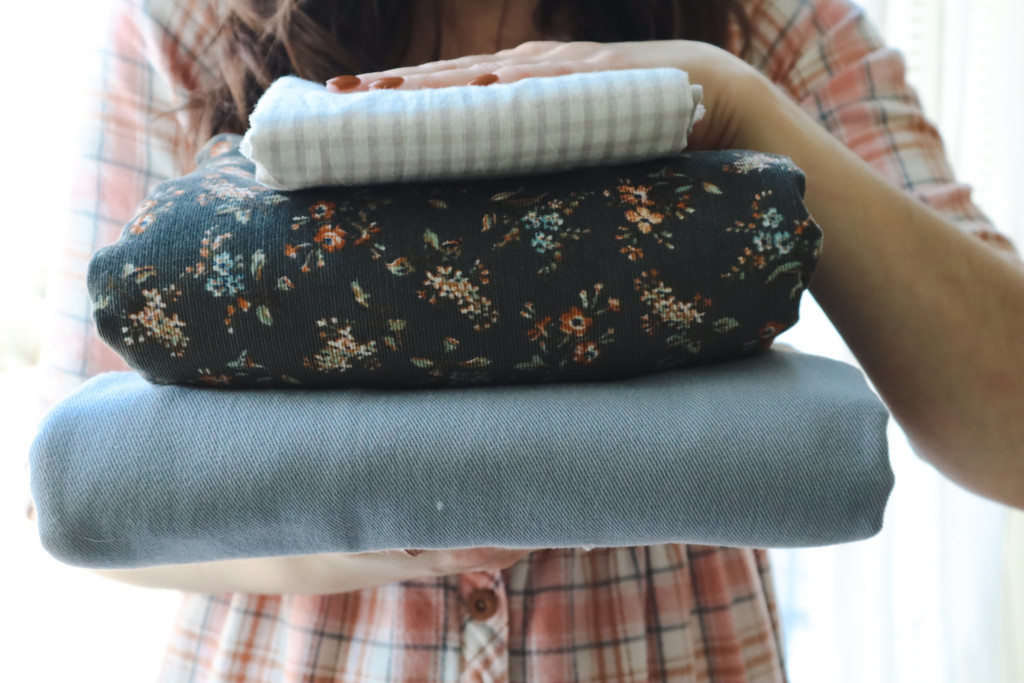
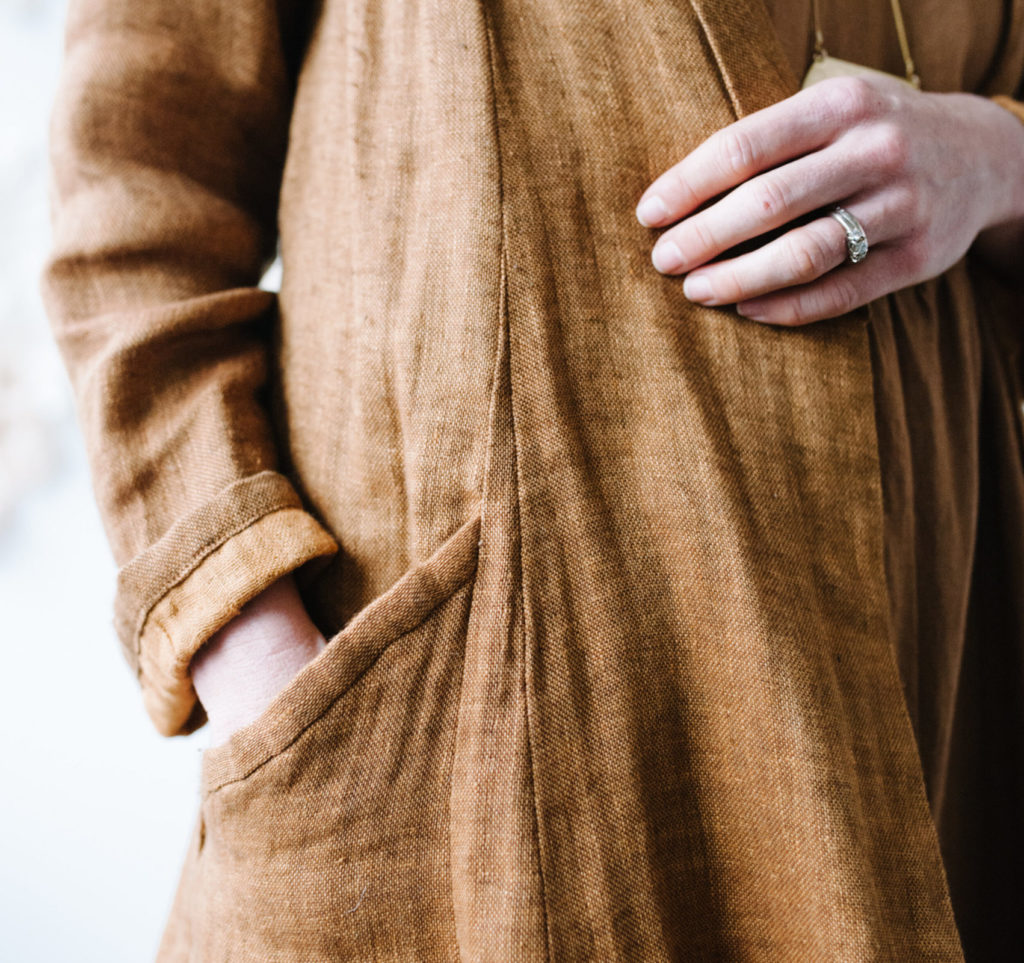
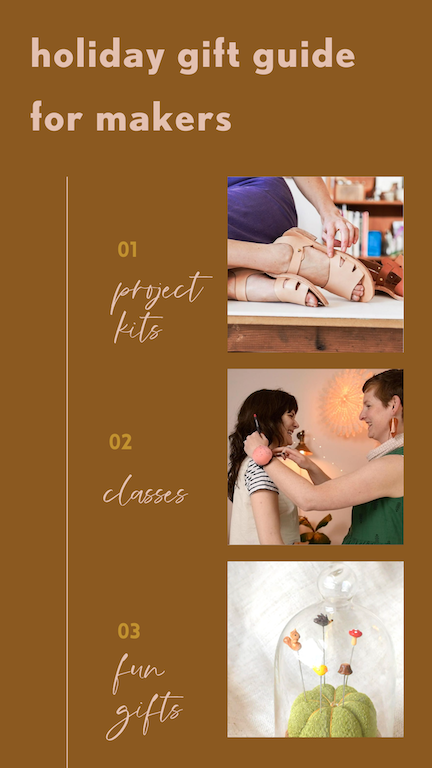
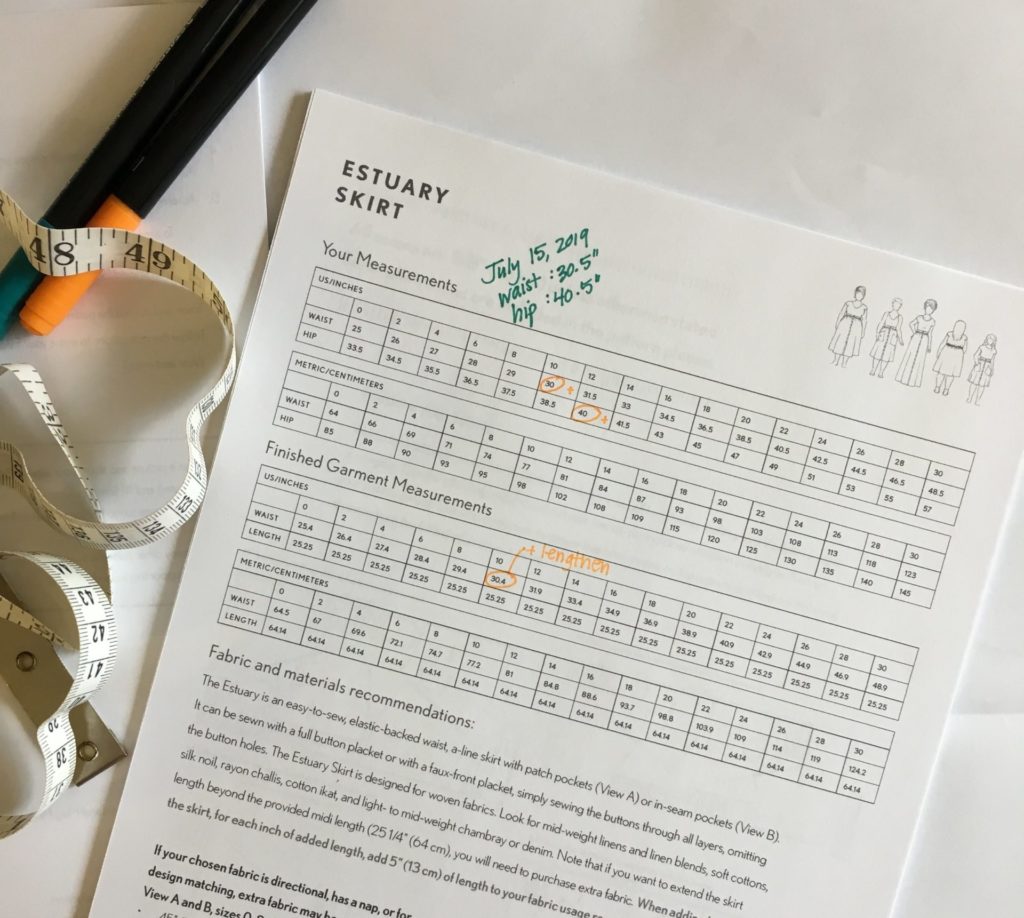
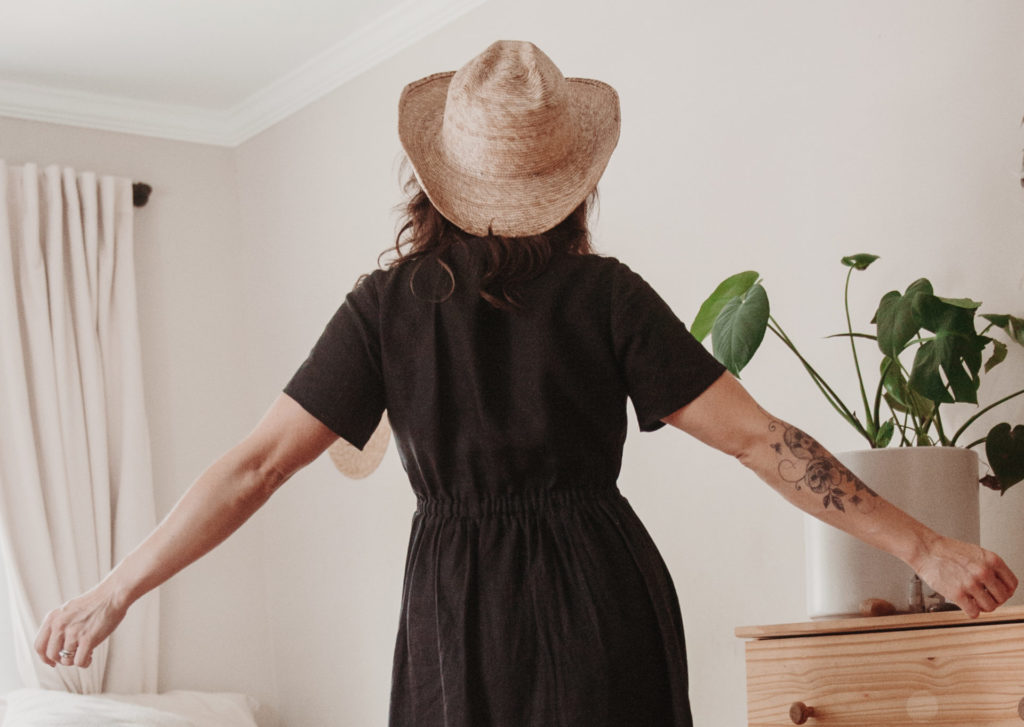
Holding onto clothes has had an unexpected benefit for me: my teens are now the same size as me, and some of my old clothes look awesome on them! I encourage them to “shop” from my wardrobe. This has brought about some Cool Mum Moments when they discover some of my treasures “Oh Mum! I didn’t know you had this!”.
I’m so glad I didn’t get rid of things.